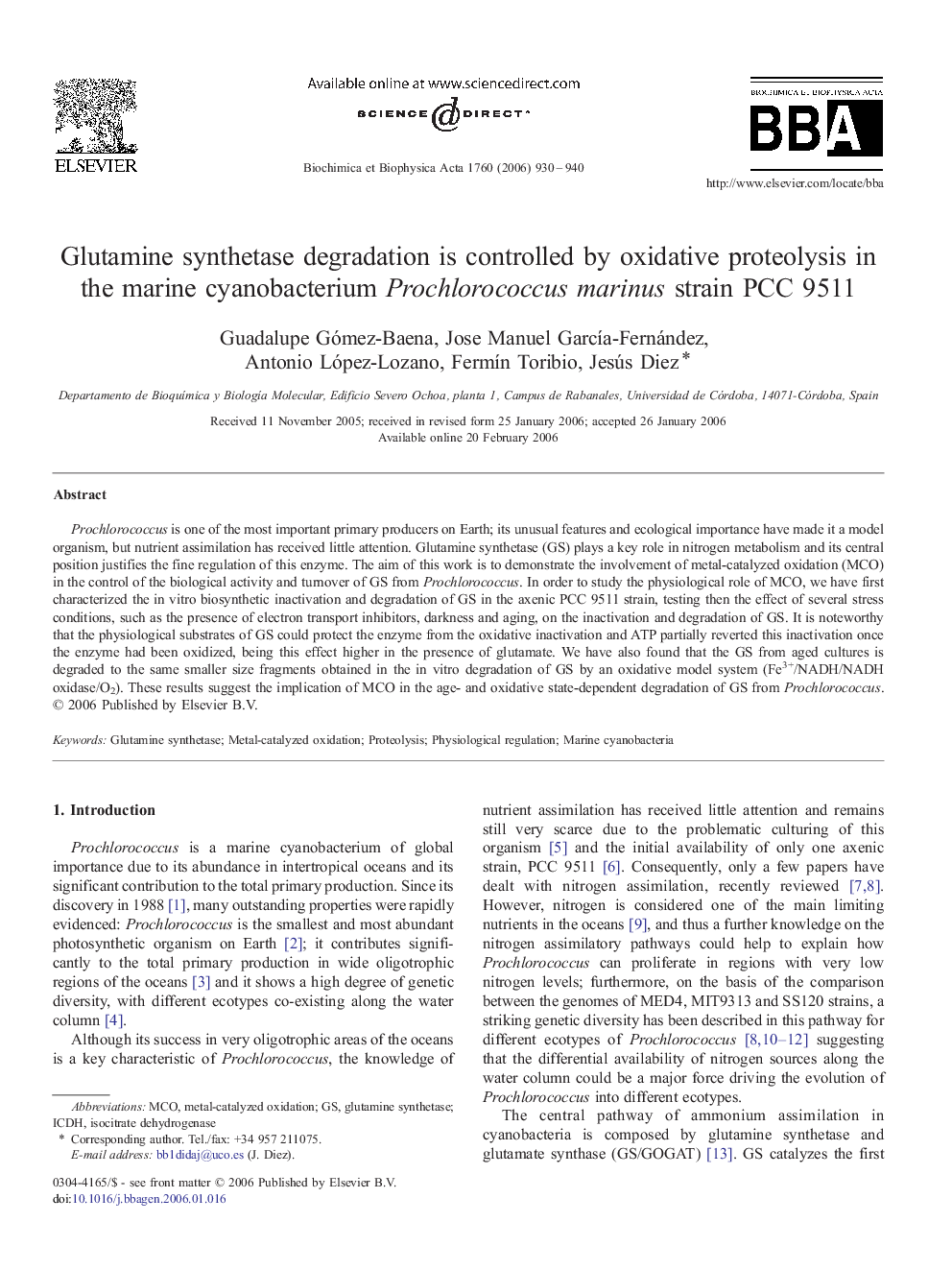| Article ID | Journal | Published Year | Pages | File Type |
|---|---|---|---|---|
| 1948776 | Biochimica et Biophysica Acta (BBA) - General Subjects | 2006 | 11 Pages |
Prochlorococcus is one of the most important primary producers on Earth; its unusual features and ecological importance have made it a model organism, but nutrient assimilation has received little attention. Glutamine synthetase (GS) plays a key role in nitrogen metabolism and its central position justifies the fine regulation of this enzyme. The aim of this work is to demonstrate the involvement of metal-catalyzed oxidation (MCO) in the control of the biological activity and turnover of GS from Prochlorococcus. In order to study the physiological role of MCO, we have first characterized the in vitro biosynthetic inactivation and degradation of GS in the axenic PCC 9511 strain, testing then the effect of several stress conditions, such as the presence of electron transport inhibitors, darkness and aging, on the inactivation and degradation of GS. It is noteworthy that the physiological substrates of GS could protect the enzyme from the oxidative inactivation and ATP partially reverted this inactivation once the enzyme had been oxidized, being this effect higher in the presence of glutamate. We have also found that the GS from aged cultures is degraded to the same smaller size fragments obtained in the in vitro degradation of GS by an oxidative model system (Fe3+/NADH/NADH oxidase/O2). These results suggest the implication of MCO in the age- and oxidative state-dependent degradation of GS from Prochlorococcus.
